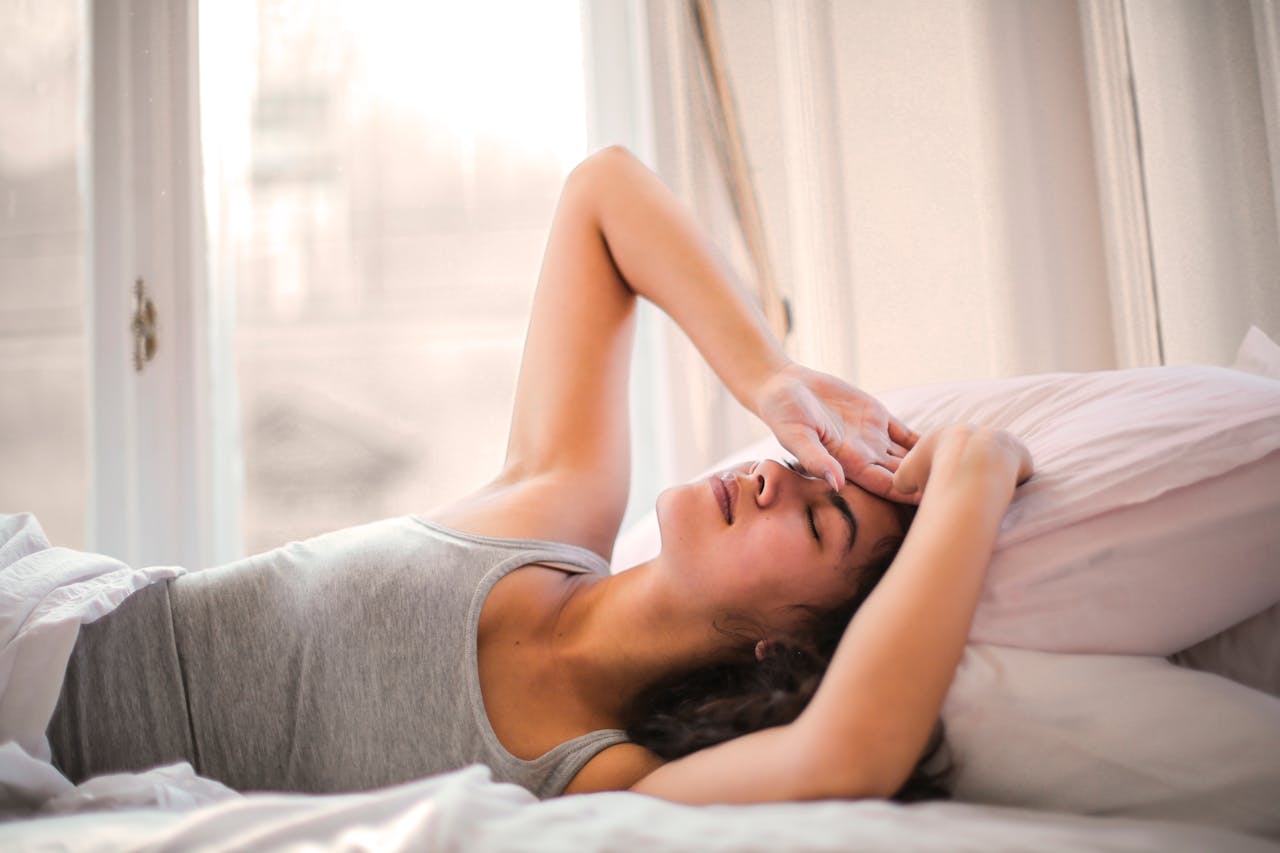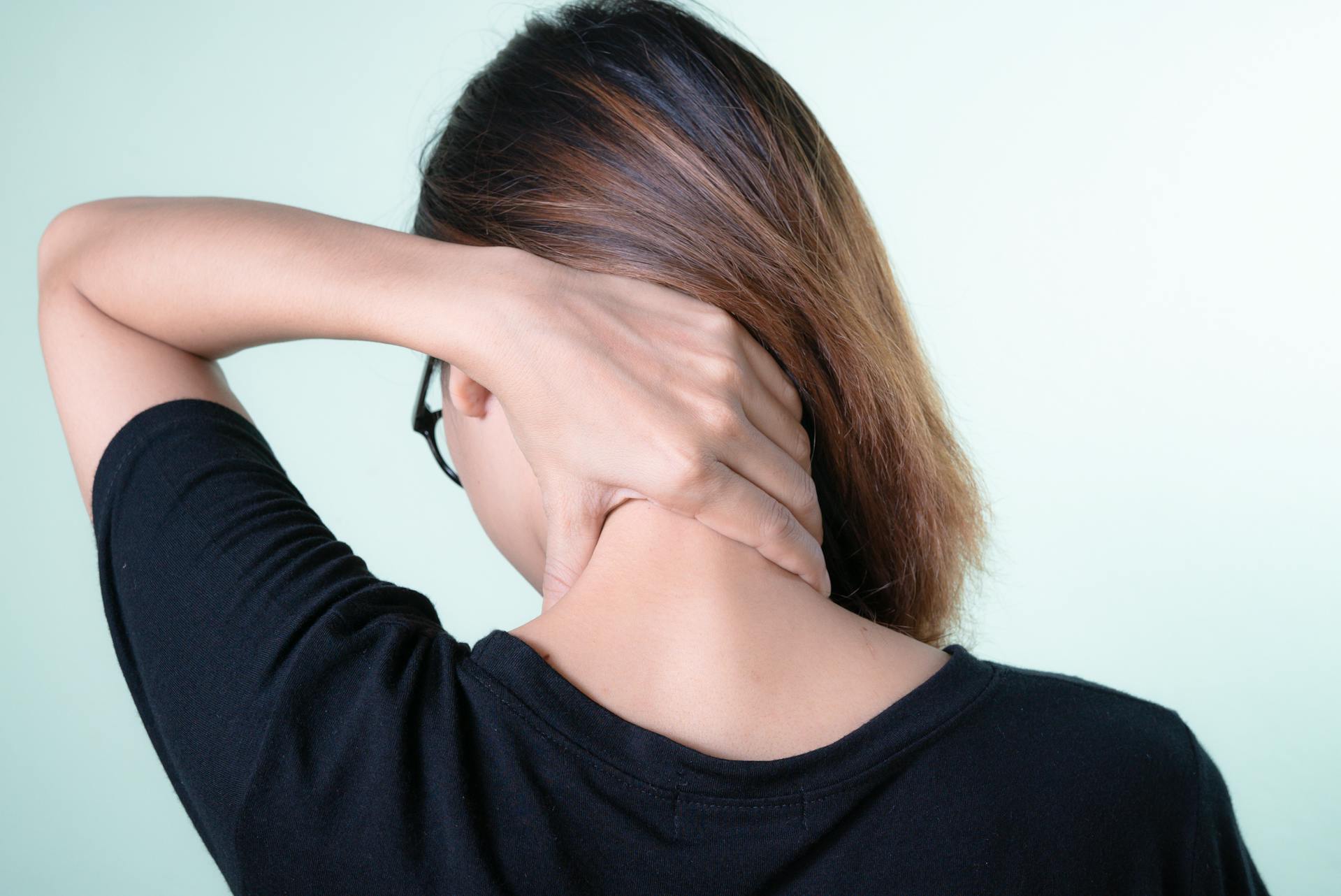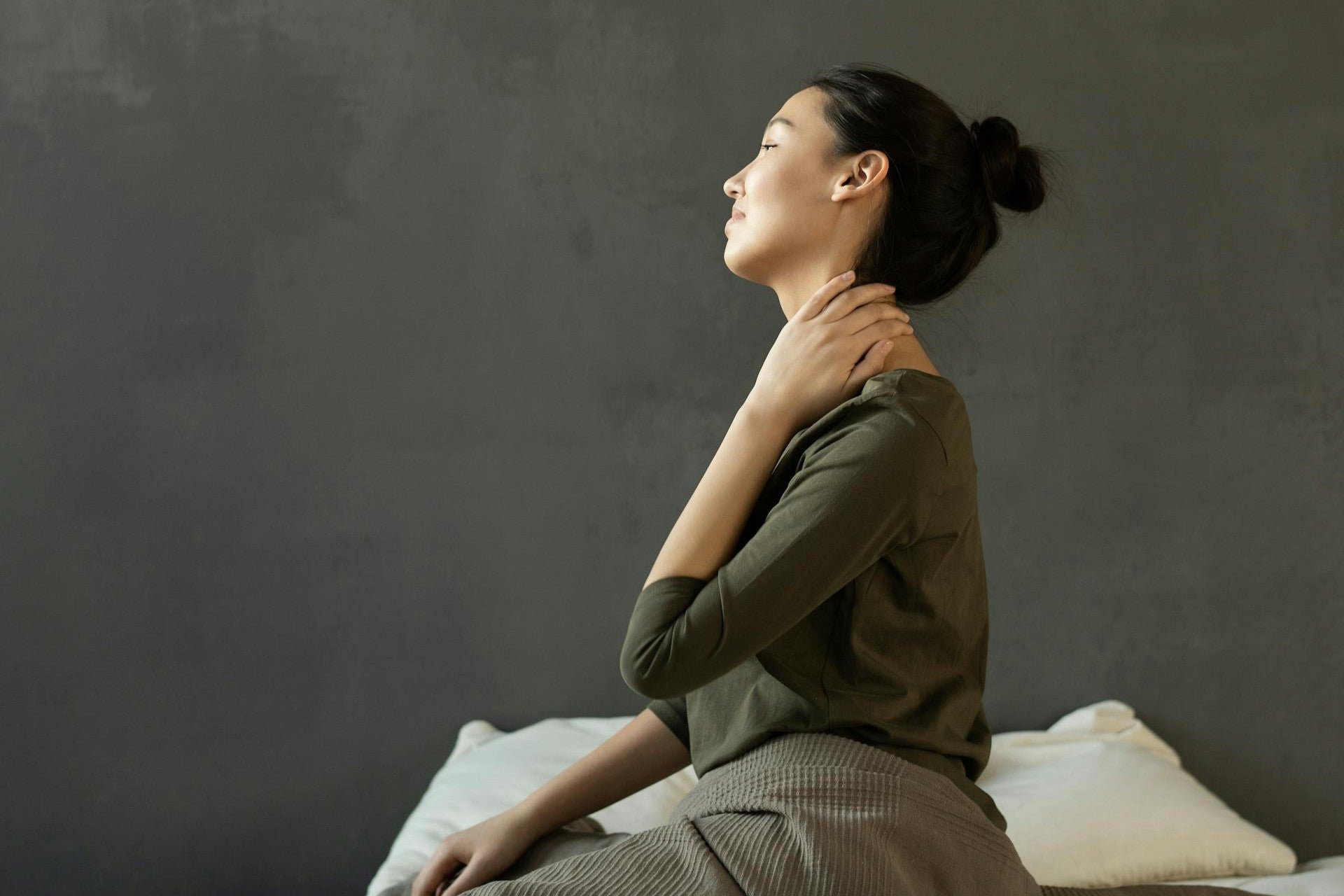Si usted forma parte del 4% de las personas que padecen cefaleas cervicogénicas (CGH), sabe lo dolorosas que pueden ser. El nombre "cervicogénicas" significa que estas cefaleas se originan en el cuello, ya sea en los músculos o en la propia columna cervical, y dado que su origen no siempre es claro, pueden ser difíciles de tratar.
Afortunadamente, si buscas remedios para aliviar el dolor causado por la cefalea cervicogénica, el masaje es una herramienta que podría ayudarte. A continuación, profundizaremos en el masaje para las cefaleas cervicogénicas, incluyendo sus posibles beneficios, opciones de automasaje y respuestas a preguntas frecuentes.
¿Qué es una cefalea cervicogénica?
Las cefaleas cervicogénicas se diferencian de otras cefaleas porque se originan en el cuello, a menudo debido a una afección en los huesos, discos o músculos cercanos a la columna cervical. Dado que tienen una causa subyacente (a diferencia de las cefaleas primarias, como la migraña), se consideran cefaleas secundarias .
Si bien el cuello siempre influye en la CGH, también es cierto que muchos tipos de dolor de cabeza pueden tener como efecto secundario la tensión cervical . Por lo tanto, si cree que sus síntomas podrían ser cervicogénicos, es importante consultar con su médico para confirmar la causa y descartar cualquier problema subyacente grave.
Causas de las cefaleas cervicogénicas
Las cefaleas cervicogénicas tienen su origen en el cuello, pero ¿qué es exactamente? ¿Qué causa su desarrollo en el cuello? Las causas pueden variar de leves a graves, incluyendo :
- Lesión o inflamación que afecta los huesos, las articulaciones, los tejidos blandos o los nervios de la columna cervical.
- Artritis en el cuello
- Un nervio pinchado
- Esguinces musculares debido al ejercicio, mala postura u otra distensión.
- Afecciones más graves, como una fractura, un tumor, una hernia discal o una lesión aguda.
Cómo tus músculos pueden desempeñar un papel
En algunas personas con CGH, los problemas musculares simples pueden ser el factor principal (o incluso el único). Por ejemplo, el dolor y la distensión muscular pueden causar inflamación que afecta las vías nerviosas del cuello, lo que puede provocar dolor de cabeza.
Otra forma en que los músculos pueden influir es a través de los puntos gatillo miofasciales . Estas pequeñas y sensibles bandas de tejido suelen ser dolorosas al tacto, pero también pueden causar dolor en otras zonas, como la cabeza o la cara. Los estudios sugieren que, aunque no sean la única causa del dolor de cabeza, las personas con HCG son más propensas a tener puntos gatillo en el cuello debido a la hiperactividad muscular.
Además, las investigaciones han demostrado que las personas con CGH a menudo tienen flexores profundos del cuello (los músculos pequeños y profundos de la parte frontal del cuello que ayudan a sostener la cabeza) más débiles.
¿Puede el masaje aliviar las cefaleas cervicogénicas? Posibles beneficios
Dado que los dolores de cabeza cervicogénicos suelen ser estructurales (relacionados con los huesos o las articulaciones), no son necesariamente algo que un masaje pueda solucionar, pero podrían brindar un alivio significativo cuando se usan como parte de un plan de tratamiento más amplio.
Hasta el momento, la investigación ha sido prometedora: una revisión de estudios de 2024 concluyó que el masaje ayudó a reducir el dolor y a mejorar la función diaria en personas con cefalea tensional y cefalea crónica. Además de aliviar el dolor en el momento, algunos beneficios adicionales pueden incluir:
Alivio del estrés
Para muchas personas, el estrés puede dificultar enormemente el manejo de la cefalea cervicogénica. La buena noticia es que el masaje puede ser un remedio fácil y eficaz para relajar la mente y el cuerpo.
Fisiológicamente, ayuda a que el cuerpo alcance un estado de relajación, lo que permite que el sistema nervioso parasimpático se active y desencadene la liberación de endorfinas, analgésicos naturales. LaAsociación Americana de Terapia de Masaje (AMTA) también considera que el masaje puede aliviar el estrés, basándose en investigaciones que demuestran que puede reducir temporalmente la presión arterial y otros indicadores físicos de ansiedad.
Tensión muscular y rango de movimiento
La limitación del rango de movimiento en el cuello es un efecto secundario común (y frustrante) de la CGH. Si alguna vez le ha resultado incómodo girar o inclinar la cabeza durante un dolor de cabeza, conoce este síntoma de primera mano. Afortunadamente, se sabe que el masaje mejora la flexibilidad y el rango de movimiento de varias maneras clave:
- Fomentar la circulación fresca, lo que puede ayudar a “calentar” las articulaciones rígidas.
- Romper la tensión muscular y los puntos gatillo que puedan estar tirando del cuello.
- Creando calor a través de la fricción y la presión, ayudando a relajar y aflojar las fibras musculares.
Modalidades de masaje para dolores de cabeza cervicogénicos
Si está pensando en incorporar el masaje a su rutina de autocuidado para el dolor de cabeza, elegir el tipo adecuado es clave. Sin embargo, cada persona con dolor de cabeza crónico es única, y es importante considerar sus preferencias de presión, afecciones previas o cualquier otro factor que pueda afectar su cuello antes de decidir.
Con esto en mente, aquí hay dos tipos de masajes que pueden ser buenos para explorar si recién estás comenzando:
Masaje sueco
¿Notas que el estrés y la tensión en la parte superior del cuerpo tienden a desencadenar o empeorar tus síntomas de CGH? Si es así, el masaje sueco puede ser una opción que vale la pena probar.
Para principiantes, puede ayudarles a ver cómo responde su cuerpo al masaje, a la vez que reduce la tensión general y mantiene una presión más suave. Es conocido por sus movimientos largos y relajantes que ayudan a estimular la circulación y calmar el sistema nervioso. Y al ser una modalidad más suave, es ideal para reducir la tensión muscular general sin sobrecargar las zonas sensibles.
Liberación miofascial/Masaje de puntos gatillo
Los puntos gatillo (o lo que muchos conocen como "nudos") son bandas de tejido tenso que se forman cuando los músculos se tensan o se tensionan repetidamente. En el cuello, suelen aparecer en el trapecio , el esplenio u otros extensores cervicales más profundos que trabajan constantemente para mantener la cabeza erguida.
Si sospecha que los nudos podrían estar causando o agravando su dolor de cabeza, una técnica de masaje llamada liberación miofascial puede ser útil. Consiste en usar deslizamientos lentos y controlados y estiramientos suaves para liberar la tensión en las fibras musculares y el tejido circundante, conocido como fascia . También puede incluir mantener presión concentrada en puntos gatillo específicos durante aproximadamente un minuto para ayudarlos a ablandarse y liberarse.
Cómo probar el automasaje para las cefaleas cervicogénicas
Si busca maneras más cotidianas de controlar el dolor de cabeza crónico, el automasaje suele ser útil. Uno de sus mayores beneficios es que puede aportar unos minutos de calma a su día, lo que por sí solo puede ser útil para algunos tipos de dolor de cabeza. Además, puede ayudar a aliviar la rigidez muscular que puede contribuir a la tensión del cuello y otros síntomas del dolor de cabeza crónico.
Para darse un masaje relajante de cabeza en casa, aquí hay tres técnicas suaves que puede probar:
Nota: Las cefaleas cervicogénicas pueden deberse a diversos problemas relacionados con el cuello, y algunas pueden ser graves. Consulte con su médico antes de probar un masaje para asegurarse de que sea seguro para usted.
Masaje de tensión simple
Esta sencilla técnica de automasaje se centra en aliviar la tensión que suele acumularse en la zona del cuello y la cabeza, acompañada de respiración profunda y estiramientos para un mayor alivio. Estos son los pasos:
- Siéntese o párese cómodamente y respire profunda y relajantemente algunas veces.
- Inclina lentamente la cabeza de un lado a otro para empezar a movilizar los músculos del cuello. (Concéntrate en detenerte cuando sientas un estiramiento suave , evitando cualquier dolor). Repite durante un minuto.
- A continuación, masajea con los dedos el músculo frontal , el músculo que se extiende por la frente y ayuda a levantar las cejas. Masajea con suaves movimientos circulares durante 30-60 segundos.
- Continúe masajeando en círculos usando las yemas de los dedos, subiendo por la línea del cabello y regresando por los lados de la cabeza.
- A continuación, usa ambas palmas para comprimir ligeramente los músculos de la nuca. Empieza por la base del cráneo y repite el movimiento hacia los hombros.
- Por último, dedica 60 segundos a aplicar pequeños movimientos circulares en los músculos de la nuca, concentrándote un poco más en las zonas que sientas especialmente tensas.
Liberación miofascial para nudos
Otra opción de automasaje que puedes probar es la liberación miofascial con una pelota de masaje, que puede ser especialmente relajante para los delicados músculos de la nuca . Simplemente:
- Coloque su pelota de masaje (o pelota de tenis) detrás de un lado de los músculos del cuello y apóyese contra una pared para mantenerla en su lugar.
- Presione suavemente la pelota para aplicar presión y haga rodar lentamente los músculos sobre la pelota durante 10 a 30 segundos.
- Ajuste la posición de la pelota según sea necesario para centrarse en diferentes áreas de tensión.
Pruebe un suave masajeador de cuello para el hogar
Hay muchas formas de probar el automasaje para aliviar el dolor de cabeza, pero para esos días en los que desea relajarse y aliviar la tensión del cuello sin esfuerzo, un masajeador de buena calidad puede ayudar.
El masajeador de cuello MedMassager es un dispositivo compatible con HSA/FSA, diseñado para adaptarse a la curvatura natural de los músculos del cuello. Ofrece dos velocidades y opciones de calor para que puedas personalizar tu sesión según las necesidades de tus músculos. Así es como funciona:
- Alinee cómodamente el masajeador alrededor de los músculos del cuello y gírelo a la configuración más ligera.
- Deja que los músculos del cuello se calienten durante un minuto para el masaje. Si lo deseas, puedes añadir un poco de calor a la sesión activando la calefacción.
- Después de 60 segundos, puedes aumentar la presión del masaje si te resulta agradable.
- Relájese con el masaje de cuello durante un total de 5 a 10 minutos.
Consejos para un masaje más seguro (y efectivo)
Dado que diversos problemas subyacentes pueden desencadenar cefaleas cervicogénicas (y no todos son tan simples como un dolor muscular o una irritación nerviosa), es importante tener en cuenta algunas precauciones de seguridad antes de comenzar. Recuerde:
- Hable con su médico sobre sus dolores de cabeza para identificar la causa subyacente y encontrar el tratamiento adecuado. También puede ayudarle a decidir si herramientas complementarias como el masaje son seguras para su situación particular.
- Considere agregar algo de estiramiento antes o después de su sesión para estimular el flujo sanguíneo y reducir aún más la rigidez del cuello.
- Empieza con una presión ligera y auméntala gradualmente según sea necesario. Es un error común pensar que la presión profunda siempre es más efectiva en la terapia de masaje. Pero lo cierto es que un masaje de leve a moderado suele ser más que suficiente para aliviar los músculos del cuello tensos o sobrecargados.
- Evite trabajar en zonas óseas como la columna vertebral. Recuerde que el masaje funciona mejor sobre tejidos blandos y puede ser irritante para los huesos o las articulaciones.
Preguntas frecuentes
Ya sea que sus dolores de cabeza cervicogénicos sean nuevos o los haya padecido durante un tiempo, es común tener preguntas antes de probar un método natural como el masaje. Aquí tiene algunas preguntas frecuentes (y sus respuestas) para guiarle al comenzar:
¿Cómo saber si un dolor de cabeza proviene del cuello?
La única forma segura de saber si un dolor de cabeza proviene del cuello es que lo confirme un profesional de la salud. Dicho esto, hay algunos factores a los que conviene prestar atención si cree que el cuello podría estar influyendo.
En primer lugar, ¿su dolor de cabeza parece ser unilateral o de un solo lado? Esta es una forma común de manifestarse por la CGH. Además, si su dolor de cabeza parece exacerbarse o empeorar con ciertos movimientos del cuello, esto también puede indicar afectación cervical. Otros signos a tener en cuenta incluyen:
- Sensibilidad o dolor en los músculos del cuello
- Rigidez o rango de movimiento reducido en el cuello
- Dolor que parece “irradiar” desde la base del cráneo, a menudo hasta la sien o el área de los ojos.
¿Puede el estrés afectar los dolores de cabeza cervicogénicos?
Para muchas personas, sí. El estrés no siempre es la causa principal de las cefaleas cervicogénicas, pero puede provocar tensión en el cuello y los hombros que desencadena o empeora los síntomas. También podría afectar la postura, fomentando inconscientemente una postura encorvada que ejerce aún más presión sobre el cuello.
¿Puede realmente el masaje ayudar a largo plazo?
Aunque puede ser increíblemente relajante, es poco probable que usar un masaje una o dos veces produzca efectos a largo plazo. Sin embargo, si se usa con regularidad, puede aliviar la tensión muscular, reducir el estrés y favorecer la movilidad del cuello y los hombros; todo lo cual puede reducir indirectamente la frecuencia de los dolores de cabeza con el tiempo.
Teniendo esto en mente, es mejor utilizarlo como parte de un plan de tratamiento más amplio combinado con trabajo postural, estrategias de estilo de vida y tratamientos médicos (si es necesario) para encontrar un alivio duradero.
Otras herramientas y tratamientos para el alivio del dolor de cabeza cervicogénico
Además del masaje, aquí hay algunos remedios y tratamientos adicionales para el dolor de cabeza cervicogénico que puede ser bueno consultar con su médico:
Fisioterapia
Los fisioterapeutas son expertos capacitados en mecánica y fisiología corporal y, dado que la fuente de CGH suele ser estructural o muscular, muchos consideran que la fisioterapia es una opción de tratamiento eficaz.
En una sesión, un fisioterapeuta podría evaluar su postura y mecánica corporal, detectando desequilibrios, puntos gatillo y músculos hipoactivos. A partir de ahí, elaborará un plan de ejercicios de estiramiento y fortalecimiento para ayudar a corregir las zonas débiles, mejorar la alineación y apoyar la función general del cuello.
Herramientas para el estrés y la salud mental
Las técnicas de manejo del estrés y relajación no son la panacea, pero sin duda pueden marcar una diferencia positiva para quienes padecen dolor crónico o recurrente. Puede llevar tiempo encontrar las estrategias que mejor se adapten a ti, pero algunas que puedes explorar incluyen:
- Ejercicio regular (¡en la forma que te resulte más atractiva!)
- Técnicas de meditación o atención plena para ayudarte a mantenerte más conectado a tierra.
- Ejercicios de respiración para la relajación fisiológica.
- Conectarse con seres queridos y amigos para recibir apoyo social
- Practicar la autocompasión y abordar patrones de pensamiento negativos
- Consultar a un profesional de salud mental para obtener apoyo adicional cuando sea necesario
Otros tratamientos
Como último paso, puede ser útil hablar con su médico sobre tratamientos adicionales para controlar los síntomas y abordar la causa raíz de sus dolores de cabeza. La fisioterapia suele ser una de estas herramientas, pero otras opciones pueden incluir:
- Medicamentos para ayudar con la inflamación y el control del dolor.
- Anestésicos locales o bloqueos nerviosos
- Terapia manual, terapia craneosacral u otras técnicas neuromusculares
La comida para llevar
Las cefaleas cervicogénicas son una cefalea secundaria poco común, pero dolorosa, que se origina en el cuello. La causa subyacente puede variar de una persona a otra. En algunas personas, estas cefaleas pueden aparecer después de una lesión, pero en otras pueden deberse a otro problema médico o incluso a un simple sobreesfuerzo muscular.
La buena noticia es que, con la aprobación de su médico, el masaje puede ser un remedio seguro y relajante que puede añadir a su rutina. Las técnicas manuales suaves pueden ser eficaces para aliviar la tensión muscular, mientras que herramientas como las pelotas de masaje pueden ayudar a aliviar los puntos gatillo y otras zonas de tensión. Y para disfrutar de un masaje sin esfuerzo en la comodidad de su hogar, las herramientas de confianza de MedMassager pueden ayudarle.
Adquiera hoy el masajeador de cuello MedMassager para comenzar o explore más herramientas elegibles para HSA/FSA aquí .



